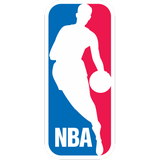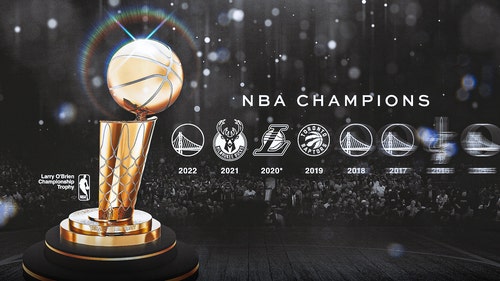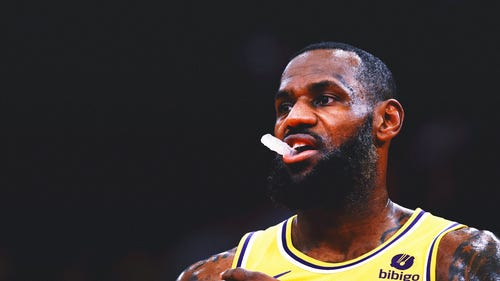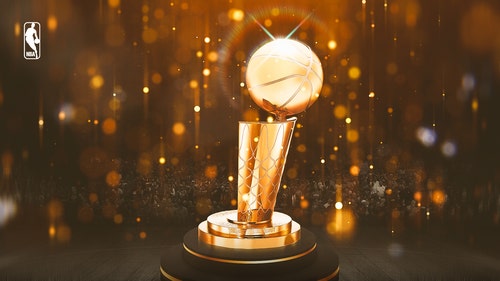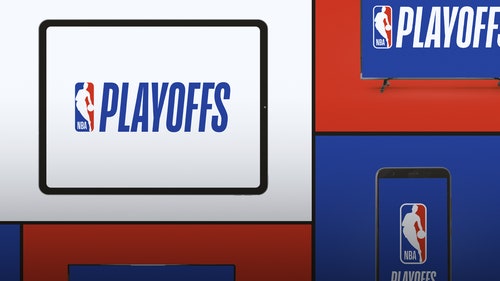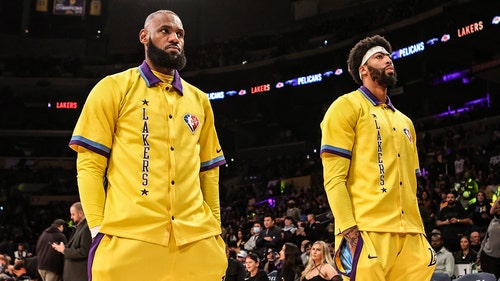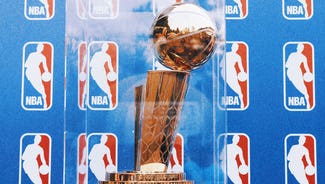
NBA Draft preview: Which conferences produce top NBA talent?

In college football, teams can't get enough of bragging about what their leagues do both in-season and in the postseason -- even that postseason that we know today as its own entity, the NFL Draft. You don't hear as much of that conference chest-thumping in college basketball, although it does exist. Still, there's not much of it at all when it comes to the NBA Draft.
So, should there be?
This is certainly debatable. Obviously, you can be an elite NFL prospect not having played in the Southeastern Conference or at a major program in another league. But there's a reason the NFL's top talent tends to come out of the SEC over the last few seasons -- it's been the best league in college football.
That's not quite the case in college basketball.
The Southern Conference had more top-25 NBA scorers this past season (two) than the Big 10 did (one), yet no one would argue that the basketball is better in the SoCon than it is in Commissioner Jim Delany's high-profile league. Steph Curry (Davidson) and Kevin Martin (Western Carolina) are the SoCon's only representative among NBA players who averaged double figures, though, and the Big 10 has 10 total players who did that last season. In this case, the issue is quality versus quantity.
Then you have the issue of which shuffled-around conference gets to claim which player.
For instance, looking at the Atlantic Coast Conference, there are newly dubbed "ACC Legends" announced each year during the conference's postseason tournament. It matters not whether said legend from a new school played in the ACC -- only that he was really good at his school before it was added to the league's lineup, thus becoming an ACC Legend. Even if said player competed in the Metro 8 or the Big East or what have you.
So if you go by that rule, the ACC had the most NBA players that averaged double figures in the 2013-14 season with 19. The SEC wasn't far behind with 18, while the Pac-12 was third (17) and the Big East (even the raided Big East) was fourth with 11. The Big 12, which has also been somewhat raided over the past few years, boasted nine such players.
Oh sure, some might say, clearly UNC and Duke skew those numbers for the ACC while Kentucky does the same for the SEC.
Not exactly.
In the ACC, Duke did lead the way with five former Blue Devils averaging double digits, but new member Syracuse wasn't far behind with three. The Orange were tied with UNC, Wake Forest and Georgia Tech for second (three each).
While Kentucky did lead the SEC -- and all schools nationwide -- with seven former players who averaged double figures last year, Florida wasn't far behind with five. In fact, Duke and Florida would be tied for second nationwide with five each -- tied with a team that, yet again, one probably wouldn't think of right away.
The knock on Texas head coach Rick Barnes has always been that he can recruit elite talent, he just can't win with said talent. Well, considering five of his former players are in the NBA and averaging double figures, that might be true. Speaking of talent without the results, while UCLA was at the top of the Pac-12 with four former players averaging double digits this season, Washington, a less heralded league rival, matched it.
In the results without talent category, one would have to look at the Big 10 -- a league thought to be the best in college basketball over the past few seasons, it produced a total of 10 players that averaged double figures last season. Just one of those was from arguably the leagues' most successful program: Michigan State.
That's a small sample size, perhaps, but a pretty good snapshot into who's relevant -- 128 NBA players averaged 10 or more points this season, so it's pretty all-encompassing, at least for a recent snapshot.
The real story there is of course that the "league" with the most players in the top 128 in scoring wasn't really a league at all. It was made up of players who either played overseas or skipped college altogether, a group of 24 (12 of each category). It's a group that is obviously not as big as it once was with the one-and-done rule now in effect, but the European players have been and will continue to be a factor for years to come as the NBA game continues to go worldwide.
And that dominance of European/straight out of high school players shows itself in terms of the league's upper-echelon players, too.
Since 2010, there have been 33 repeat All-Star selections. Nearly a quarter of them -- eight -- have either come directly out of high school or from overseas. Of the other 25, the ACC and SEC lead the way with five apiece. But the Big 12 isn't far behind with four, and the Pac-12 has had three.
If you include even one-time selections since 2010, though, the Pac-12 surges to the lead with nine selections (including three in the last two seasons).
The SEC is just behind them with eight. The ACC, Big East and Big 12 each have five.
The real shocker here is the Big 10. That's a league that has had just two All-Star selections since 2010. Two. Total. You know another league that has as many? The WAC. That's right.
But that doesn't tell us all we need to know. That's just scoring and All-Star ballots. There are plenty of great players in the NBA that don't make the All-Star team and/or don't light up the scoreboard.
The folks at Basketball Reference developed a statistic called Win Shares, which basically calculates the total number of wins a player is responsible for based on offensive and defensive statistics. There are only two players that have been in the top 20 of this category for each of the past five seasons -- shockingly enough, it's LeBron James and Kevin Durant, the two best players in the game.
There are only four more who have been in the top 20 for four out of the past five seasons, and another four more that have done it for three of the five. So that's 10 total that have been in the top 20 at least three out of the last five seasons.
Durant (Texas) joins Blake Griffin (Oklahoma) to rep the Big 12. Wake Forest product Chris Paul is the ACC's only two-or-more guy. The Pac-12 has both James Harden (Arizona State) and Kevin Love (UCLA), while Marquette's Dwyane Wade represents for the Big East.
The other four -- James, Dirk Nowitzki, Pau Gasol and Dwight Howard -- didn't go to college.
Another 16 have done it twice, and 30 just once. Of the 26 that have at least two of the last five seasons, nine of them came straight out of high school or from overseas -- over a third. The ACC, SEC and Pac-12 are all tied with three each to lead the way, while the Big 10, Big East and Big 12 each have two. So, really, no league is dominating the repeat Win Shares leaders -- except, of course, for international players, who lead the way with five.
There are 30 players who have made the list just once, leaving us with 56 total players that have shown up on the top 20 in Win Shares since the 2010 season. There are nine international players and seven that came straight from high school ... then comes the Big 12, Pac-12 and SEC with six representatives each on that list. The ACC and Big East are next with five each, then the Big 10 has had three.
The good news is that there's been plenty of turnover lately.
This season there were eight new members of the top 20 in Win Shares, and all but one (Goran Dragic) played college basketball. No one is saying that having international players or high school players who went pro succeeding is a bad thing, but it's always fun for college basketball fans when players that they recognize and remember achieve at the next level. (Then again, it's plenty fun watching LeBron James dominate, too.)
Is it a selling point if your league has top-level NBA talent? Yes, perhaps. If that's the case, then the new-look ACC definitely benefitted from adding Syracuse. Pitt and Louisville in recent years. The league already led the way with 20 of this year's top 128 scorers in the NBA.
But if you're going with quality over quantity, the Big 12 might win here. Three of the league's top eight scorers were from the Big 12, including the league's MVP in Durant. Griffin and Texas product LaMarcus Aldridge were the other two.
If you want quality depth, it's probably the Pac-12. That league has three of the league's top 10 scorers and five of the top 25, including rising stars like Klay Thompson (Washington State) and Isaiah Thomas (Washington), not to mention Harden, Love and DeMar DeRozan (USC).
If you're a coach that recruits a lot of NBA-caliber players without the overall record to match, then it really doesn't matter much. All the same, most coaches have been able to use that as a selling point, whether their players simply get drafted or get drafted and turn into stars once they're there. There's probably no good way of predicting which league best prepares players for the NBA -- it's all fairly cyclical, and so much is dependent on the individual program itself.
It's different than the NFL, where supposedly the quality of competition you've faced matters a great deal. NBA scouts and GMs just want to know one thing -- can you play? Paul George from Fresno State, Damian Lillard from Weber State and Paul Millsap from Louisiana Tech -- all top 30 scorers in the NBA this season, and none from major conferences -- would all say yes.
The real question for the ACC in particular is who's next? Besides Duke's Kyrie Irving, the league's other All-Stars are likely aging out. Wake's Tim Duncan is near retirement, while Paul has been in the league for nearly a decade. Carmelo Anthony (should the league retroactively claim him from Syracuse) is still one of the league's best players, but likely not for much longer.
Some candidates will have to come from this year's draft to join guys like Georgia Tech's Thaddeus Young (30th in the NBA in scoring this year) and UNC's Ty Lawson (35th), not to mention Syracuse's young Michael Carter-Williams (42nd) and even former Wake point guard Jeff Teague (44th). Former Georgia Tech star Derrick Favors had a breakout year as well (79th), while Boston College alum Reggie Jackson was a key cog for the Thunder (86th). John Henson of UNC seems primed for a big year as well (112th).
Will they be superstars? Too early to say. Someone from this year's class has the potential to join the superstar ranks, though -- could it be Duke's Jabari Parker, or Syracuse's Tyler Ennis? Maybe it will be NC State's T.J. Warren, who's getting more and more buzz as the draft approaches. Parker seems like the best bet, but if the NBA Draft has taught us anything, it's that there's no sure thing.
